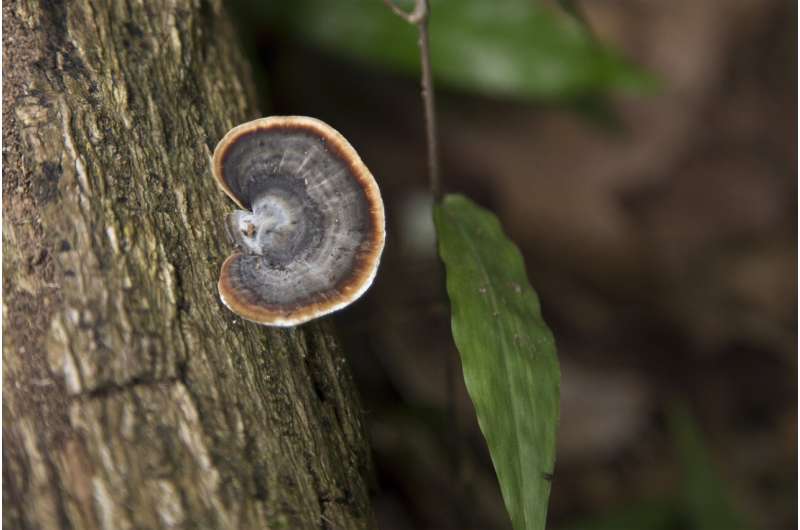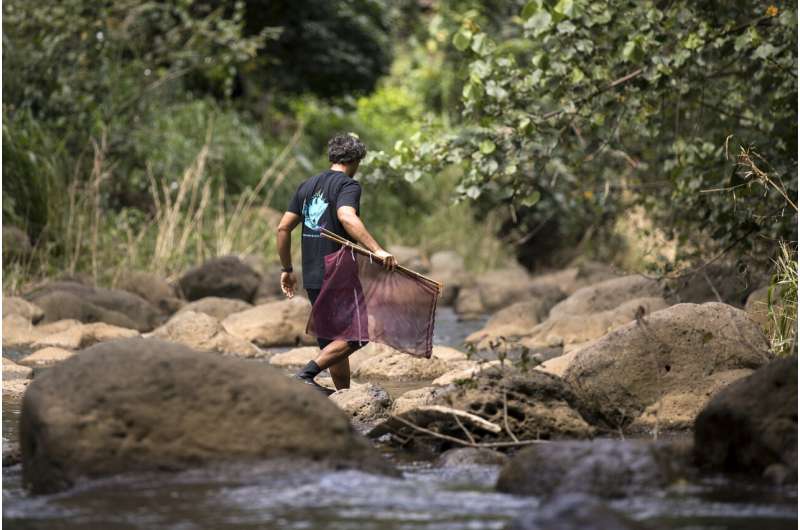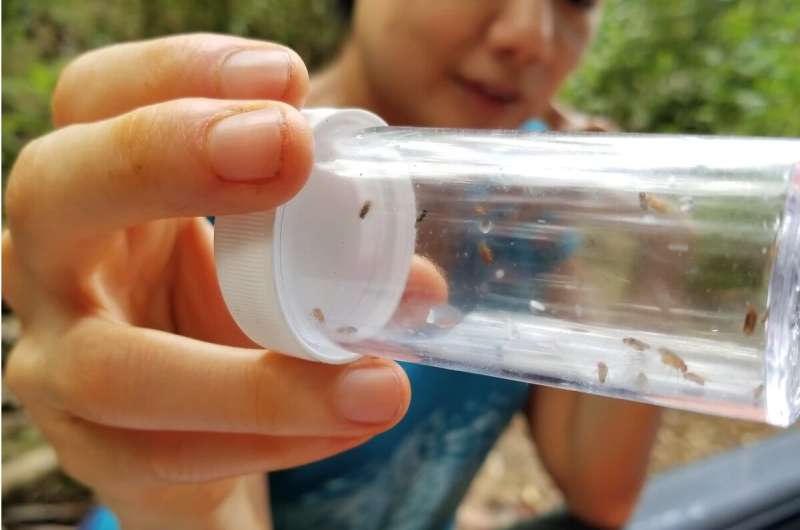Ridge-to-reef ecosystem census reveals hidden reservoir for microbiomes

In a monumental field expedition, a team of researchers at the University of Hawai'i (UH) at Mānoa School of Ocean and Earth Science and Technology (SOEST) collected more than 3,000 samples of microbes and microbiomes present in the entire watershed of Waimea Valley on O'ahu, Hawai'i. Their investigation revealed three key discoveries: microbes follow the food web, most of the microbial diversity in a watershed is maintained within the soil and stream water, and the local distribution of a microbe predicts its global distribution. Their findings were published recently in the Proceedings of the National Academy of Science.
Plants and animals are each host to anywhere from dozens to thousands of different microbes, collectively known as microbiomes. They metabolize our food, detoxify contaminants and help fight off disease. Microbes also occupy every habitat around us and run the machinery that sustains the air we breathe, the water we drink, and builds the soil under our feet. Despite their importance, most microbiomes of plants and animals are generally not present at birth and are instead acquired. But from where? And where do microbes live when not in their hosts?
The research team conducted a microbiome "bioblitz"—a near complete census of all environmental substrates and possible hosts to microbes within the watershed. They took samples from the wet summit of Puʻu Kainapuaʻa, the low floodplain of Waimea Valley and even the clear waters of Waimea Bay. Researchers gathered samples from soil; stream and sea water; animals, including rats, crayfish, mosquitoes, and sea urchins; and plants, including trees, ferns, and algae; and much more. They extracted and sequenced more than 800 million microbial DNA "barcodes," to determine which microbes were present where.
When the team assessed where the largest diversity of microbes was found and where there were fewer species, the structure followed the food web—many types in soil and water, fewer in plants and fewer still in animals.

"Further, microbes that were found in animals tended to be a subset of the microbes associated with plants and the microbes on plants tended to be a subset of the microbes in soil, water, and sediment," said Sean Swift, study co-author and doctoral student in the UH Mānoa Marine Biology Graduate Program. "It's as if plants assemble their microbiome from the environment and then animals select their microbiome from that of plants. Microbiomes of organisms are generally subsets of those that are lower on the food chain."
One obvious means of assembling a microbiome is to acquire microbes from a related host—as a human mother shares her microbiome with an infant, for example.
"However, this model is insufficient to sustain microbiomes across a dynamic landscape," said Nicole Hynson, associate professor in the Pacific Biosciences Research Center (PBRC) at SOEST. "Many plants and animals are sparse, seasonal or ephemeral, requiring that their symbiotic microbes be capable of residing at times in alternate nearby hosts or environments. We found that soil, sediment and water serve as reservoirs for microbial diversity—providing environmental waiting rooms for microbes to colonize hosts when they are available."
Another key finding is that the local distribution of a microbial species predicts its global distribution.

"Microbes that occur in only one or two organisms or environments in Waimea Valley are unlikely to be widespread globally," said Craig Nelson, co-author and associate research professor in the Daniel K. Inouye Center for Microbial Oceanography: Research and Education and Hawai'i Sea Grant. "Some microbes were widespread in Waimea and are presumably adaptable to all sorts of hosts and habitats. Our analyses demonstrated that those generalist microbes were also most widely recovered from diverse habitats across the globe."
Both plants and animals need microbes to stay healthy. The recent work shines light on the diversity and distribution of microbiomes at a landscape scale, an approach made possible by the unique structure and habitat diversity of Hawaiian watersheds.
"Understanding sources of shared microbial diversity in ecosystems allows us to better understand the origins and assembly processes of symbiotic microbes and their role in preserving biodiversity and ecosystem services," said Anthony Amend, lead author of the study and associate professor in PBRC. "If we want to restore native plants and animals to an area, we may need to think about restoring the source environments for their microbiomes as well. Microbes are yet another way that organisms are connected to the environment."
The UH Mānoa research team included experts from SOEST, College of Social Sciences, College of Tropical Agriculture and Human Resources and College of Natural Sciences.
More information: A ridge-to-reef ecosystem microbial census demonstrates environmental reservoirs for animal and plant microbiomes, Proceedings of the National Academy of Sciences (2022). DOI: 10.1073/pnas.2204146119.
Journal information: Proceedings of the National Academy of Sciences
Provided by University of Hawaii at Manoa


















